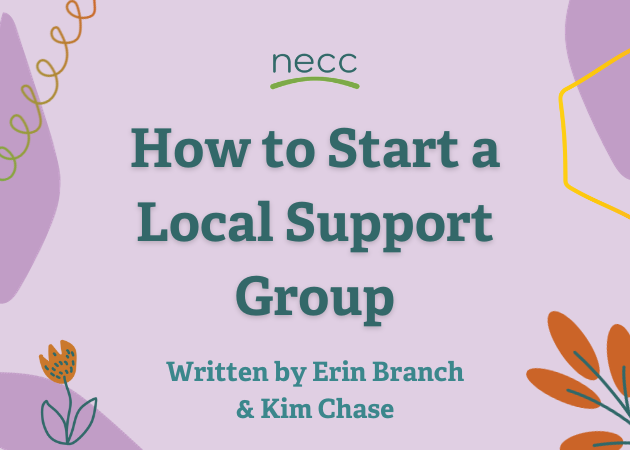Written by Erin Branch & Kim Chase
Organizing and starting a local support group might seem like a fairly simple task – find a meeting space, set up a time to meet, put out the snacks, and wait for the people to come. However, successfully maintaining a support group takes a time commitment and a solid foundation. Let’s discuss it more!
What are support groups?
Support groups are groups of people who gather to share experiences associated with a topic or shared experience. In this case, we will focus on support groups for early childhood providers.
In a support group, people are able to talk with other providers who are like themselves – people who truly understand what they’re going through and can share the type of practical insights that can only come from firsthand experience.
Some of the common characteristics of support groups include:
- They are made up of peers – people who are all directly affected by a particular issue or circumstance.
- They usually have a volunteer leader or facilitator and/or a board who organizes the support group activities.
Why create and facilitate a support group?
There are many benefits to support groups:
- When someone doesn’t know many (or any) other providers, support groups can be a great way to build a sense of community, networking, and professionalism.
- Support groups empower people to work through issues facing their community or area.
- Members can share information, keeping one another up-to-date on news of interest to them.
- Members act as role models for each other.
- Talking to others in support groups reduces anxiety, improves self-esteem, and helps members’ sense of well-being overall. Belonging to an active professional organization/support group has been shown to help prevent burnout.
Is there a need for a support group in my area?
Before you put work into starting a group, ask the very important question – is there a need for a group to be developed? If you answered yes to this question, some other things you may like to consider include:
- Learn about any existing groups in your area. Your group should complement, not duplicate, what is already available in your area.
- Speak to other leaders of similar organizations for information on how they have successfully run a group and what challenges, if any, they have had.
- Reach out to your local Early Learning Connection coordinator as a source for guest speakers or other potential resources.
Remember, you don’t have to be everything to all people or do everything at once. Start small so that you can build up over time. Think about the structure of the group and how roles will be managed.
How do you create a support group?
Think about what you want to accomplish.
Decide what your group’s purpose will be and who you want to reach. You might find it helpful to write vision and mission statements for your support group.
Is the goal of your support group to provide networking opportunities and professional development? Will it be based on a yearly membership fee or a pay-as-you-go structure?
Example vision/mission statements include:
Lincoln Area Child Care (LACC) – “Working, caring, and sharing together… helping to make Lincoln a better place”
Area Childcare Educator Support (ACES) – “Our vision is for all child care providers to have access to quality training and support that fosters successes and development for both providers and the families they serve.”
Now that you have a vision – what’s next?
Personal reasons for leading the group. What is it that makes you feel that you are called to lead this group? Is it something you feel a personal passion for, and not something you’ve been pressured into? Lead it for the right reasons. If you are doing it for personal glory, you will likely be disappointed.
Welcome packet. Put together a folder of information such as your mission statement, guidelines, helpful handouts, registration form, and contact information for new members.
Promotion. What are your plans for letting people know about your group?
Frequency of meetings. How often do you want to meet? Weekly, bi-monthly, monthly? Consider the schedules of the participants. Would you rather have 70% show up once per month or 30% twice per month?
Expenses. How do you plan to cover expenses for things like room rental, snacks, photocopies, welcome folders, etc.? Are people comfortable with a donation jar or a membership fee such as a $10 donation? Is there another way to raise funds without asking your members for the money?
Mentorship. Who will you go to when you need advice or assistance with a situation in your group?
Finding new participants. What ways can your group members encourage others to attend? Brainstorm together how you can have more members if this is your desire.
About the authors:
Erin Branch, B.S., has been a state-licensed child care provider since 2012. Her previous work experience working with children and families within the child welfare field has influenced her enthusiasm to support the children, families, and their support systems within the community. She currently resides in Lincoln, NE, where she operates The Branch Ranch Childcare.
Kim Chase, M. Ed., owns and operates Chase’s Child Care Corner in Papillion, NE. She is passionate not only for the children she cares for, but in providing quality professional development for adult learners in the early childhood profession. Having been born and raised in rural Nebraska, living now in an urban setting helps Kim understand the unique challenges facing providers across our state.

